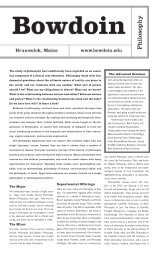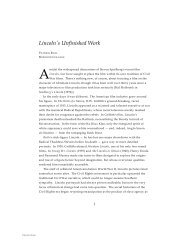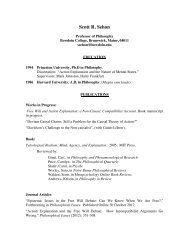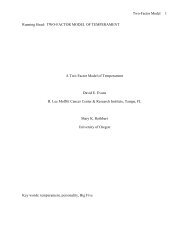Create successful ePaper yourself
Turn your PDF publications into a flip-book with our unique Google optimized e-Paper software.
ENERGY DISPERSIVE X-RAY SPECTROMETRY--<br />
<strong>EDS</strong> INSTRUMENTATION & SIGNAL DETECTION<br />
1. X-Ray Detectors:<br />
ALAN SANDBORG<br />
<strong>EDAX</strong> INTERNATIONAL, INC.<br />
The <strong>EDS</strong> detector is a solid state device designed to detect x-rays and convert their<br />
energy into electrical charge. This charge becomes the signal which when processed<br />
then identifies the x-ray energy, and hence its elemental source.<br />
The X-ray in its interaction with solids, gives up its energy and produces electrical<br />
charge carriers in the solid. A solid state detector can collect this charge. One of the<br />
desirable properties of a semiconductor is that it can collect both the positive and<br />
negative charges produced in the detector. The figure below shows the detection<br />
process.<br />
Figure 1.<br />
There are two types of semiconductor material used in electron microscopy. They are<br />
silicon (Si) and germanium (Ge). In Si, it takes 3.8 eV of x-ray energy to produce a<br />
charge pair, and in Ge it takes only 2.96 eV of energy. The other properties of these two<br />
types will be discussed later in this section. The predominant type of detector used is<br />
the Si detector, so it will be favored in the discussions. With a Si detector, an O K x-ray<br />
whose energy is 525eV will produce 525/3.8= 138 charge pairs. A Fe K x-ray will<br />
produce 6400/3.8= 1684 charge pairs. So by collecting and measuring the charge, the<br />
<strong>EDAX</strong> Phoenix Training Course - <strong>EDS</strong> Instrumentation & Signal Detection - page 1

















